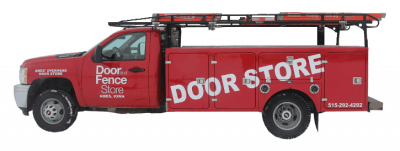When replacing or upgrading a garage door opener, you’ll likely encounter two common options: chain and belt drives. Both are popular for residential garage doors, and each comes with its own advantages. Knowing the differences between chain vs. belt drive garage doors can help you find a suitable option for your home and climate, especially in areas like Ames, Iowa.
Here’s what you need to know to make the right call.
Strength and Door Weight
Both chain and belt drives refer to the mechanisms that open and close a garage door. A chain drive relies on a metal chain (similar to a bike chain), while a belt drive uses a rubber belt reinforced with fiberglass or steel.
Chain drives are suited for heavy-duty lifting and can handle garage doors weighing up to 500 pounds. They work well for larger doors, such as double-car garage doors wider than 16 feet or taller than 7 feet, or doors made from dense materials like solid wood or steel panels.
Belt drives, while still strong, are better suited for single-car garage doors that are up to 10 feet wide and 8 feet tall, made from fiberglass or aluminum.
Noise Levels
Noise is one of the most significant factors for homeowners choosing a garage door opener. Because of their metal-on-metal operation, chain drives are louder, which may be disruptive if your garage is attached to the house or located beneath a bedroom. In colder climates like ours, chain links can contract slightly in winter, making them even noisier during operation.
By contrast, belt drives are quiet and smooth. They’re the preferred option for those who value near-silent operation or have an office near the garage.
Maintenance Differences
Maintenance needs vary between chain and belt drive garage doors, impacting how long they’ll last. Chain drives require regular lubrication of the chain and moving parts, ideally every 3 to 6 months, to prevent rust and wear.
On the other hand, belt drives have fewer moving parts and don’t require lubrication, making them lower in overall maintenance. Their rubber belts are designed to resist stretching and cracking.
When properly maintained, chain drive systems typically last 10 to 15 years, while belt drives often have a slightly longer lifespan of 15 to 20 years due to less mechanical strain. Regular professional inspections—recommended at least once a year—from a trusted garage door store expert can detect minor issues early and help extend the lifespan of either system.
Think Beyond Today
One of the lasting differences between chain vs. belt drive garage doors is how each system fits into your daily life, not just in performance, but in style. Belt systems feature sleeker, more modern housings that blend nicely into finished garages. Chain drives, while reliable, tend to have a more mechanical look.
For expert guidance, smooth installation, or reliable repairs, turn to The Door and Fence Store in Ames, Iowa. Our team offers inspections, upgrades, and services that homeowners can trust.








